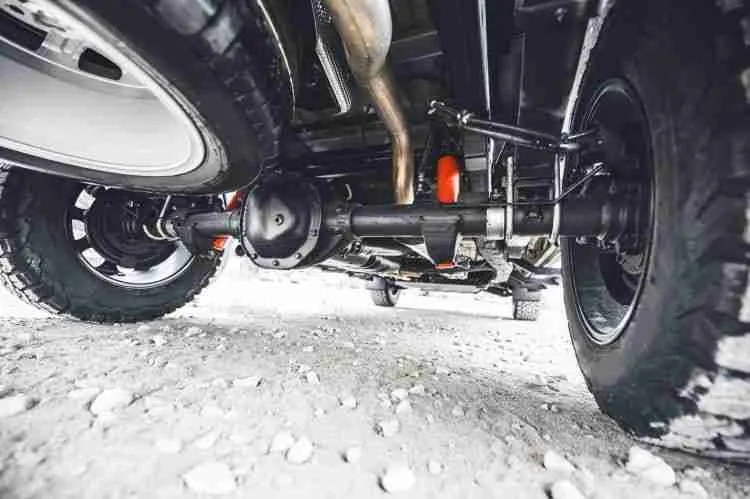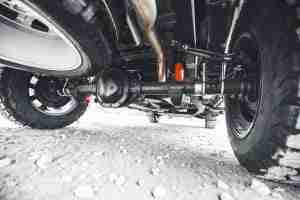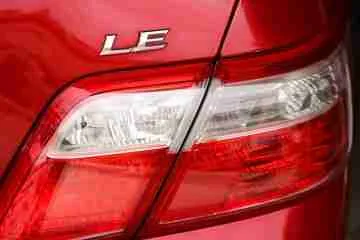6 Bad Ball Joint Symptoms Every DIY Mechanic Needs to Know

Your car has a lot of moving and motion-absorbing parts. Namely, your ball joints. We often forget about parts like these because we don’t typically see them unless we’re purposefully looking at them.
However, when they go bad, we certainly feel them. Each part that undergoes wear and tear will present itself differently. For example, a sensor issue may cause your car to shut off while a bad distributor cap can cause your engine to misfire.
There’s a lot to learn about your car, which can get overwhelming if you don’t know where to start. To learn exactly what bad ball joint symptoms feel like, keep reading.
The Dangers of Bad Ball Joints
 Balls joints are vital to your car’s suspension. They have a ball-and-socket design that allows your suspension system to pivot, much like the hip joints in your body. Inside each ball joint are a bearing and stud, encased in a snug, lubricated casing. Depending on the type of car you have you may have either front or front and rear ball joints.
Balls joints are vital to your car’s suspension. They have a ball-and-socket design that allows your suspension system to pivot, much like the hip joints in your body. Inside each ball joint are a bearing and stud, encased in a snug, lubricated casing. Depending on the type of car you have you may have either front or front and rear ball joints.
Each ball joint on your car is there to keep your tires flush against the road while your suspension moves around while you’re driving. The Balls joints sit on the furthest edges of your upper and lower control arms, connecting them to the steering knuckles. Like most of the parts on your car, ball joints wear down over time and need replacing.
If you don’t replace your ball joints when it’s time, you run the risk of damaging your car. Or worse—you may end up in a fatal accident.
Bad Ball Joint Symptoms and Signs
Ball joints usually last between 70,000 and 150,000 miles depending on the wear and tear you put on your car. Incidentally, they’re easy to forget about. Your owner’s manual will tell you when it’s time to replace the various parts of your car, but there are other ways to tell when it’s time for a ball joint replacement.
These are the six serious signs of a bad ball joint. Memorize them:
1. Excessive Vibration From the Front End
When ball joints wear down, they lose their lubrication and begin to rust. Things like rust, dirt, grit, and friction cause the connective hold they have to loosen. Once they loosen, they begin to vibrate disproportionately and excessively while your car is in motion.
You’ll notice the vibrations on either side of your front end, depending on which ball joint is worn out. In some cases, you’ll feel the vibrations through your steering wheels. In extreme cases, it may cause your front end to not only to vibrate, but shake at high speeds.
2. Clunking, Creaking, and Squeaking
One of the most common symptoms of ball joint wear and tear is a clunking noise coming from your front suspension. Once a ball joint wears out and becomes loose, it’ll rattle and knock around within its socket as you drive. The clunking noise will get louder the more they wear down.
Additionally, you’ll hear the clunking accompanied by creaking or squeaking as you take turns and any time your suspension moves. Remember, the louder the noise, the worse shape your ball joints are in.
3. Uneven Tire Wear
Bad ball joints will cause the inner and outer tread on your front tires to wear down quicker. This is also known as “feathering.” You may not notice at first, which is why you should inspect your tires every once in a while, to make sure all the treading is even.
As each ball joint and socket comes loose, it throws your entire suspension out of alignment. This causes steering issues and causes the rubber treading to make inconsistent contact with the ground. This may happen to just one tire or both at the same time, depending on how many of your ball joints are going bad.
4. A Wandering Steering Wheel
When your ball joints and alignment are in good condition, your steering will remain straight and responsive. Of course, once your steering wheel starts drifting to the left or right on its own, it’s a good indicator that your ball joints are shot.
A wandering steering wheel contributes to tire feathering, as well as the other bad ball joint symptoms mentioned above. You, as the driver, will have to compensate for the lack of suspension control.
5. Suspension Damage
A worn-out ball joint has the potential to lock up. When your ball joints lock up, they’ll no longer absorb the bumps and uneven roads you’re traveling on. All the normal motion that your ball joints typically compensate for gets transferred to the other components of your suspension.
The other components of your suspension aren’t meant to absorb the same motion and force as your ball joints. The result is suspension damage, starting with your control arm bushings. Your control arm bushings are made of rubber, which damages easily, causing the aforementioned shaking at high speeds.
6. Car Accidents
Car accidents are more of a side effect rather than a symptom of bad ball joints. However, it’s important to understand what could happen if you ignore these critical suspension parts.
A severely worn out ball joint or, ball joints, can result in complete breakage. When your wheels are moving in whichever direction they please, the ball joints can break in various ways. This could cause you to lose control of your steering, or worse—cause a wheel to break off at the control arm or steering knuckle.
These types of accidents often end with injuries or fatalities.
Keep an Eye on Your Ball Joints
Don’t wait around for bad ball joint symptoms to present themselves. Keep an eye on your alignment and how your car feels as you’re driving. Check the treading around your tires, and inspect for rust and worn out sockets from time to time.
Replacing your ball joints isn’t exactly a job for the amatuer mechanic, especially if they’re extremely worn out. If you’re unfamiliar with your suspension system and its components, it’s best to leave the job up to a professional mechanic.
For more informational articles on car care and other how-to tips, check out the rest of our site.













No Comment